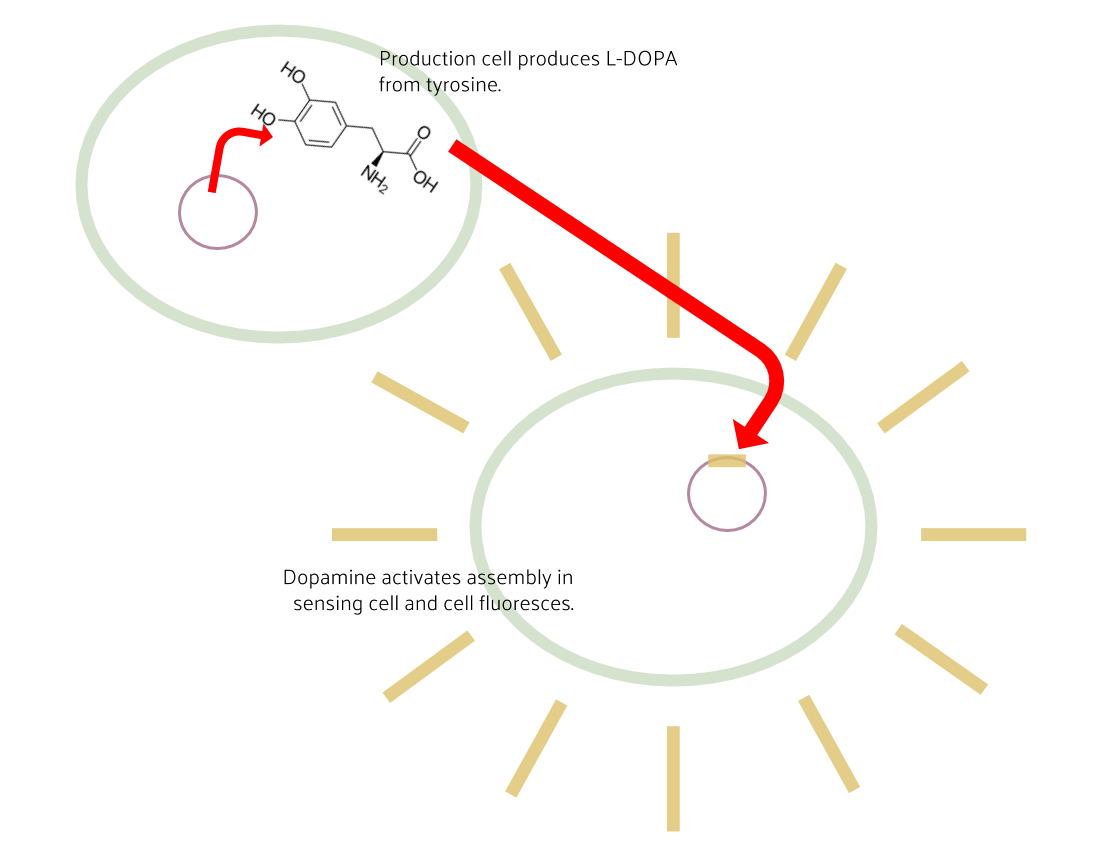Description
What is Parkinson's Disease?
Parkinson’s disease (PD) is a neurodegenerative disorder affecting dopamine-producing neurons in the substantia nigra in the brain. Dopamine, a neurotransmitter and important messenger between two brain regions, the substantia nigra and the corpus striatum, is necessary for controlled movements. Shortages of dopamine cause communication between the substantia nigra and the corpus striatum to become ineffective and, as a result, basic movement becomes impaired. The greater the loss of dopamine, the worse the movement-related symptoms. This is why many individuals afflicted with PD express symptoms of shaking, rigidity, slowness in movement, impaired balance, and difficulty in walking, among other things. As symptoms get worse, essential actions such as chewing, talking, or even swallowing may become difficult for an individual. Dementia, loss of sense of smell, and cognitive impairment are also apparent in the most advanced stages of PD.
What are the current Treatments?
While it is well known that a lack of dopamine causes the motor symptoms of Parkinson’s, it is unclear why PD develops and why dopamine-producing cells in the brain begin to deteriorate. Despite this, there are a number of established treatments that aid individuals in overcoming PD. However, these treatments, as with all treatments, have theirs own cons:
-
The most common and effective treatment for severe cases of PD is levodopa (L-DOPA) therapy. Levodopa therapy increases dopamine levels by introducing dopamine’s chemical precursor, L-DOPA, into the bloodstream, often achieved using an oral capsule. Once in the bloodstream L-DOPA can diffuse through the blood-brain barrier and be converted to dopamine by L-DOPA decarboxylase in the brain.
Despite its efficacy, the prescription of L-DOPA therapy is often offset because after the “honeymoon” phase, in which certain symptoms of PD are significantly reduced, the effectiveness of L-DOPA wears off over time, leading to ‘DOPA resistant’ motor symptoms. Furthermore, with oral capsules, additional side effects can result from fluctuating concentrations of L-DOPA in the bloodstream throughout the day before peak dosage and after peak dosage due to the “wearing off effect.” These symptoms include bradykinesia, slowness of movement, other dyskinesias, involuntary movements, motor fluctuation, and nausea.
-
Continuous dopaminergic stimulation (CDS), the constant release of L-DOPA, is sometimes used for very severe cases to prevent further symptoms resulting from the “wearing off effect.” A common application of CDS is Duodopa, a portable pump that administers a continuous mixture of L-DOPA and carbidopa, an L-amino acid decarboxylase inhibitor, directly into the duodenum or jejunum via a surgically implanted tube.
Other treatments such as deep brain stimulation surgery (DBS), dopamine agonists (compounds which activate dopamine receptors, and drugs inhibiting the activity of enzymes that facilitate the degradation of dopamine in the brain have also been used in efforts against PD. Generally, however, surgeries can be expensive and drugs such as dopamine agonists have been found to be less effective than levodopa and wear off about a year.
What is our project?
Quite simply, our project involves building DNA circuits that produce and sense L-DOPA using bacteria. But, why have bacteria producing L-DOPA? Our answer lies in the gut microbiome; although still not fully understood, the bacteria living in the intestinal tract could potentially serve as a chassis for L-DOPA producing circuits. Similarly to Levodopa treatments by way of orally-taken pills, L-DOPA would be absorbed into the bloodstream from the digestive tract and could pass through the blood-brain barrier to the brain, where L-DOPA would be converted into dopamine.

Unfortunately, our project never reached the stage where we were able to test our circuits in any gut bacteria, be they human or otherwise, but we did build and test our circuits in lab strain E. coli.
Our project consists of two separate E. coli cells, each with its own specific circuit: one cell, the ‘production’ cell, focuses on the production of L-DOPA while the other cell, the ‘sensing’ cell, senses and reports the production of L-DOPA by the ‘production’ cell.
References
"Genetics and Parkinson's Disease." The Michael J. Fox Foundation for Parkinson's Research | Parkinson's Disease. N.p., n.d. Web.
Heyn, PhD Sietske N. "Parkinson's Disease: 17 Early Signs, Symptoms & Treatment." MedicineNet. N.p., n.d. Web.
Jankovic, Joseph, and L. Giselle Aguilar. "Current Approaches to the Treatment of Parkinson’s Disease." Neuropsychiatric Disease and Treatment. Dove Medical Press, Aug. 2008. Web.
Karlsborg, Merete, Lise Korbo, Lisbeth Regeur, and Arne Arne Glad. "Duodopa Pump Treatment in Patients with Advanced Parkinson‘s Disease." Danish Medical Bulletin (2010): 1-6. Danish Medical Journal. Web.
Keus, Samyra H.J., Bastiaan R. Bloem, Erik J.M. Hendriks, Alexandra B. Bredero‐Cohen, and Marten Munneke. "Evidence‐based Analysis of Physical Therapy in Parkinson's Disease with Recommendations for Practice and Research." Movement Disorders. Wiley Subscription Services, Inc., A Wiley Company, 28 Nov. 2006. Web.
"Parkinson's Disease | PD | MedlinePlus." MedlinePlus Trusted Health Information for You. N.p., n.d. Web.
"What Is Parkinson's?" Parkinson's Foundation. N.p., 18 Oct. 2017. Web.
iGEM teams are encouraged to record references you use during the course of your research. They should be posted somewhere on your wiki so that judges and other visitors can see how you thought about your project and what works inspired you.

